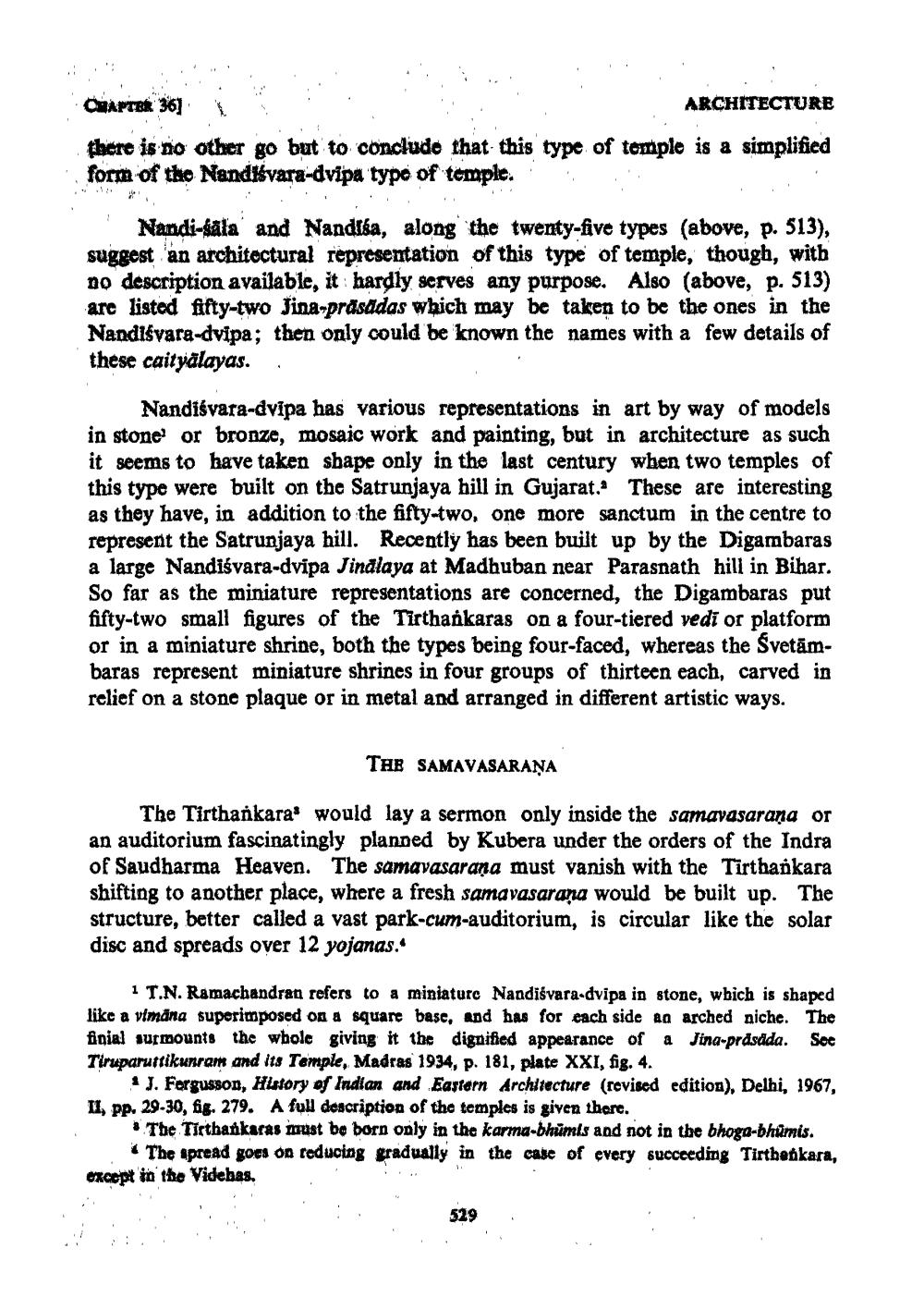________________
CHAPTER 36) i
ARCHITECTURE there is no other go but to conclude that this type of temple is a simplified form of the Nandkvara-dvipa type of temple.
Nandi-gála and Nandisa, along the twenty-five types (above, p. 513), suggest an architectural representation of this type of temple, though, with no description available, it hardly serves any purpose. Also (above, p. 513) are listed fifty-two Jina prasadas which may be taken to be the ones in the Nandiśvara-dvipa; then only could be known the names with a few details of these caityälayas. ..
Nandiśvara-dvipa has various representations in art by way of models in stone or bronze, mosaic work and painting, but in architecture as such it seems to have taken shape only in the last century when two temples of this type were built on the Satrunjaya hill in Gujarat. These are interesting as they have, in addition to the fifty-two, one more sanctum in the centre to represent the Satrunjaya hill. Recently has been built up by the Digambaras a large Nandiśvara-dvipa Jinalaya at Madhuban near Parasnath hill in Bihar. So far as the miniature representations are concerned, the Digambaras put fifty-two small figures of the Tirthařkaras on a four-tiered vedi or platform or in a miniature shrine, both the types being four-faced, whereas the Svetāmbaras represent miniature shrines in four groups of thirteen each, carved in relief on a stone plaque or in metal and arranged in different artistic ways.
THB SAMAVASARANA
The Tirthankara# would lay a sermon only inside the samavasarana or an auditorium fascinatingly planned by Kubera under the orders of the Indra of Saudharma Heaven. The samavasarana must vanish with the Tirthankara shifting to another place, where a fresh samavasarana would be built structure, better called a vast park-cum-auditorium, is circular like the solar disc and spreads over 12 yojanas..
1 T.N. Ramachandran refers to a miniaturc Nandiśvara dvipa in stone, which is shaped like a vimäna superimposed on a square base, and has for each side an arched niche. The finial surmounts the whole giving it the dignified appearance of a Jina-prasada. Soe Tiruparuttikunram and its Temple, Madras 1934, p. 181, plate XXI, fig. 4.
J. Fergusson, History of Indian and Eastern Architecture (revised edition), Delhi, 1967, II, pp. 29-30, fig. 279. A full description of the temples is given there.
* The Tirthařkaras must be born only in the karma-bhümis and not in the bhoga-bhümis.
The spread goes on reducing gradually in the case of every succeeding Tirthenkara, except in the Videhas.
529 .




